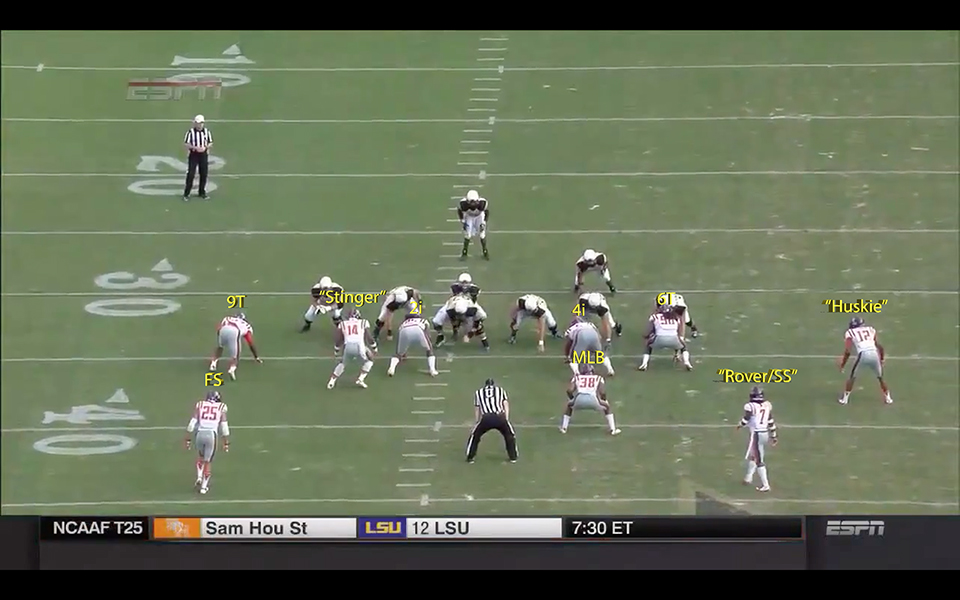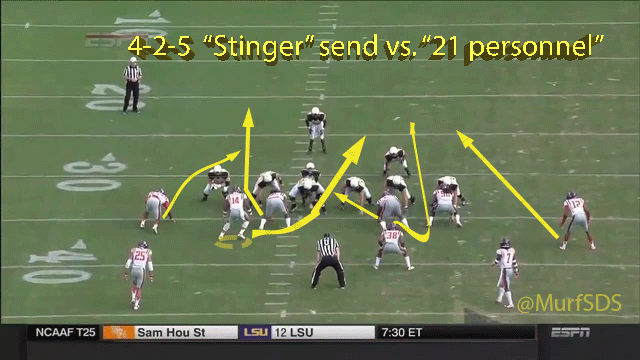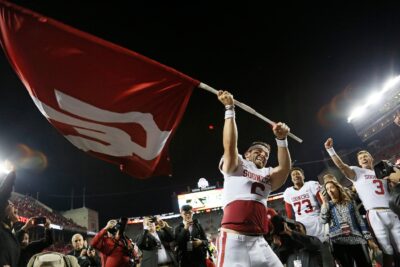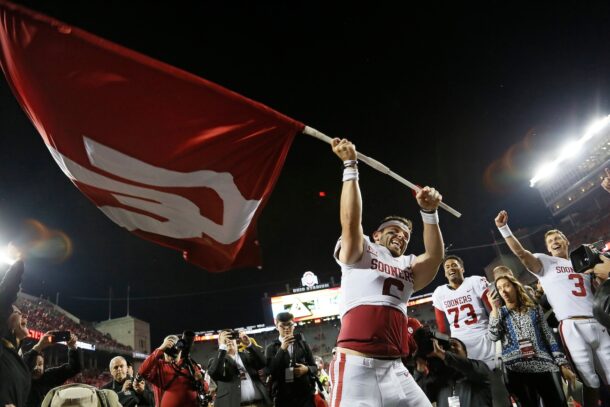The Ole Miss Rebels may have the most talented defense in the SEC
By Murf Baldwin
Published:
For rabid fans of defensive schemes, tactics and personnel — like yours truly — there’s nothing better than Southeastern Conference football.
Some of the most respected defensive minds in the business reside down south: Nick Saban (head coach, Alabama), John Chavis (defensive coordinator, LSU), Will Muschamp (HC, Florida) and Jeremy Pruitt (DC, Georgia) immediately come to mind.
All have suffocating defenses with dense playbooks. And what is undoubtedly a testament of how great Saban is, two of those coaches — Pruitt and Muschamp — served under Saban for years at various stops.
But it may be University of Mississippi DC Dave Wommack that deserves the lion’s share of the praise. After all, his scheme/philosophy can be measured against anyone’s in the country, and his personnel — particularly the starting lineup — is as talented as you’ll ever see.
Don’t be surprised if you look around and see Wommack’s unit atop of most of the defensive categories at season’s end.
Wommack’s Philosophy/Scheme
I first started studying Wommack’s scheme when he was the coordinator at nearby Georgia Tech (2008-09). His 4-2-5-based scheme is almost perfect in my eyes, which might be the defensive back in me speaking, because of the versatility it brings.
By employing an even-front alignment, you allow your defensive linemen to shoot gaps and effect the game in the backfield. While odd-front alignment seem to be all the rage, specifically 3-4-based units, controlling the line of scrimmage needs to be the first order of business — especially with the influx of spread offenses.
That’s not to say you can’t control lines with in that particular scheme, it’s merely shedding light that it has limitations that a great even front doesn’t.
Wommack does a wonderful job creating space for his fast-flowing defense to operate. While he does employ a nose tackle (2-technique), the rest of the defense is filled with players that would normally be considered undersized. But when your entire defensive roster is physical, it supersedes size.
Because of its scheme and personnel versatility, Mississippi doesn’t have to go to sub packages. But when you have some of the talent it has among its two-deep, it begs the question: why not empty out your depth chart?
NT (0-, 1 – and 2-technique): The nose tackle in this scheme operates much like one in an odd-front defense. It’s meant to tie up blockers and let the rest of the linemen/linebackers prosper. Woodrow Hamilton (6’3″, 315 lbs) does a masterful job being physical at the point of attack and has a future in the NFL. Bryon Bennett (6’2″, 293 lbs) is a bigger body that seems to be more of a one-gap penetrator; his versatility is a necessity.
DT (3-, 4- and 5-Technique): The defensive tackle in Wommack’s scheme is set up to be a back-field disruptor. By playing him next to the NT, and it lessens the chances he’ll be double-teamed. Robert Nkemdiche (6’4″, 292 lbs) has all the tools to be the very best at his position (click here for my full breakdown of Nkemdiche). Bennett moonlights at this position as well. Isaac Gross (6’1″, 250 lbs) achieved 3.5 sacks from the interior last season.
DE (6-, 7- and 9-technique): Wommack plays his weak-side defensive end out wide to use his athleticism to his advantage. C.J. Johnson (6’2″, 225 lbs) has the ability to achieve double-digit sacks in this scheme if he can just stay healthy; he has superior first-step quickness. Freshman Marquis Haynes (6’3″, 220 lbs) has similar ability. The strong-side defensive end is a bigger body that controls the edge. Fadol Brown (6’4″, 280 lbs) and Channing Ward (6’4″, 274 lbs) man this position.
“Mike” linebacker: D.T. Shackleford (6’1″, 247 lbs) is a solid player at the position, his ability to shed blocks is a necessity in this scheme. Christian Russell (6’0″, 235 lbs) adds quality depth.
“Stinger” outside linebacker: This position is only meant for players with sideline-to-sideline tackling ability. Wommack does a great job at making sure this position is uncovered and free to make plays. Denzel Nkemdiche (5’11”, 201 lbs), my favorite player on the team, is a jack-of-all-trades linebacker/safety hybrid. His ability to cover, blitz, tackle and diagnose is unparalleled — with the exception of fellow Stinger Serderius Bryant. Getting both of these players on the field at the same time should be a top priority.
Here’s a shining example how the Stinger is freed up to make plays. From the base 4-2, the Stinger is sent on a run blitz, which is actually a two-man game with the 2-technique who slide steps to occupy action from the center.
From there it’s all instinct as Bryant plants the ball-carrier. Having Bryant occupy his incumbent position, with Nkemdiche kicking back to strong safety would be absolutely insane!
Huskie: This position calls for a unique player who’s a blend between a safety and a linebacker. But for all intents and purposes this position should be called nickel corner. That’s what makes Tony Conner (6’0″, 217 lbs) such a valuable commodity. He could easily start at safety for most of the teams in the league, and he could start at “Will” linebacker for the rest. But on this impressive defense he does a ton of covering from the slot.
“Rover” strong safety: This should be Nkemdiche’s position, as he’ll certainly play it in the NFL; but I digress. The safeties in Wommack’s scheme are interchangeable, in theory, but the Rover has to do a tad bit more covering as it plays on the closed side of the formation. Trae Elston (6’0″, 195 lbs) is pretty good player in his own right who is not afraid to stick running backs and has some range to cover. Backup Anthony Alford (6’1″, 212 lbs) has some range of his own as he looks like he could play corner in a pinch.
Free Safety: The free safety has similar duties to the Rover around the line of scrimmage: man coverage and blitzing. But often this player is a single-high safety in some of the fabricated-pressure schemes. Cody Prewitt (6’2″, 217 lbs) is the very best player on the team (and the best in the nation at his position). His ability as an in-the-box safety is uncanny, but he could be a Cover-1 safety in the NFL with ease (as his league-leading six interceptions suggests). No player that big should be that fast and athletic. Not to mention he’s ultra-physical.
One word: ouch!
Corner (Boundary and Field): The boundary corner, the player on the short side of the field, needs to be your best cover guy as most college teams target the easier throws. Mike Hilton (5’9″, 182 lbs) is shorter in height, but he’s long in the talent department. The field corner is occupied by the athletic Senquez Golson (5’9″, 176 lbs). Both players are not afraid of contact.
Verdict
Wommack has done Yeoman’s work assembling top-notch defensive talent in Oxford. There are potential All-Americans at every level of the defense with young players gaining the necessary experience to make sure there’s not a dramatic drop off from starter to backup.
While the Crimson Tide may have the most overall talent on the defensive side of the ball — mostly due to quality depth — the Ole Miss defense can match them starter for starter. The Rebel faithful should be excited for what’s in store in the very near future. The arrow is certainly pointing up for the “Land Shark” defense.
Former linebacker/safety Murf Baldwin specializes in diving deep into the Xs and Os of the game with the goal of educating and entertaining while bringing fans closer to their team.










